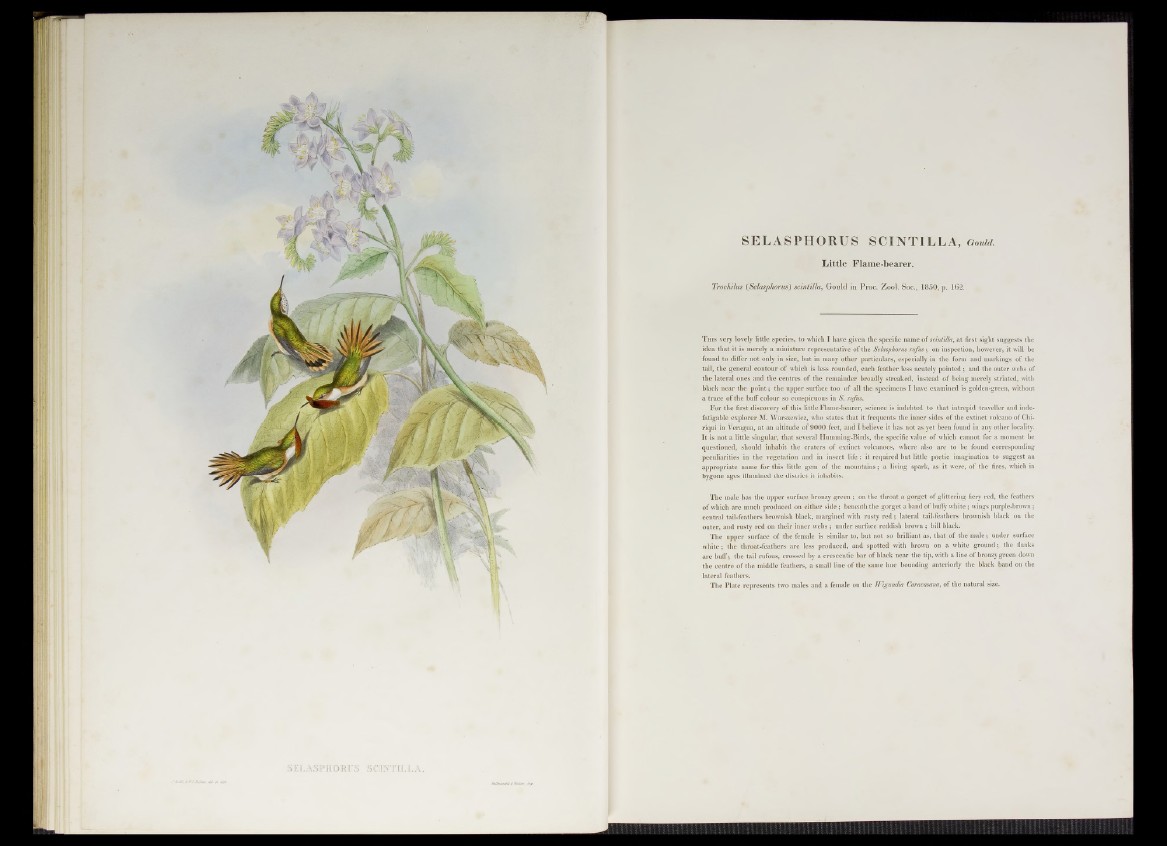
SELASPHORUS SCINTILLA, Gould.
Little Flame-bearer.
Trochilus (Selasphorus) scintilla, Gould in Proc. Zool. Soc., 1850, p. 162,
This very lovely little species, to which I have given the specific name of scintilla, at first sight suggests the
idea that it is merely a miniature representative of the Selasphorus rufus; on inspection, however, it will be
found to differ not only in size, but in many other particulars, especially in the form and markings of the
tail, the general contour of which is less rounded, each feather less acutely pointed ; and the outer webs of
the lateral ones and the centres of the remainder broadly streaked, instead of being merely striated, with
black near the point; the upper surface too of all the specimens I have examined is golden-green, without
a trace of the buff colour so conspicuous in S. rufits.
For the first discovery of this little Flame-bearer, science is indebted to that intrepid traveller and indefatigable
explorer M. Warszewiez, who states that it frequents the inner sides of the extinct volcano of Chi-
riqui in Veragua, at an altitude of 9000 feet, and I believe it has not as yet been found in any other locality.
It is not a little singular, that several Humming-Birds, the specific value of which cannot for a moment be
questioned, should inhabit the craters of extinct volcanoes, where also are to be found corresponding
peculiarities in the vegetation and in insect life: it required but little poetic imagination to suggest an
appropriate name for this little gem of the mountains; a living spark, as it were, of the fires, which in
bygone ages illumined the district it inhabits.
The male has the upper surface bronzy green ; on the throat a gorget of glittering fiery red, the feathers
of which are much produced on either side; beneath the gorget a band of buffy white; wings purple-brown;
central tail-feathers brownish black, margined with rusty red; lateral tail-feathers brownish black on the
outer, and rusty red on their inner webs ; under surface reddish brown ; bill black.
The upper surface of the female is similar to, but not so brilliant as, that of the male; under surface
white; the throat-feathers are less produced, and spotted with brown on a white ground; the flanks
are buff; the tail rufous, crossed by a crescentic bar of black near the tip, with a line of bronzy green down
the centre of the middle feathers, a small line of the same hue bounding anteriorly the black band on the
lateral feathers.
The Plate represents two males and a female on the Wigandia Caracasana, of the natural size.